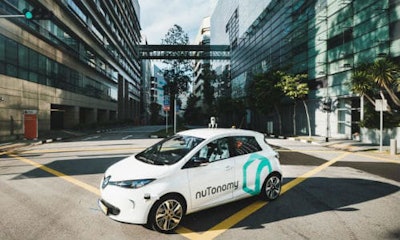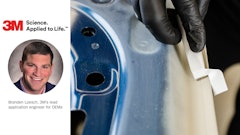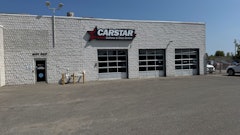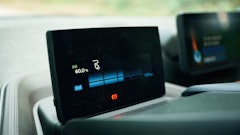
By Jeff Sanford
Toronto, Ontario — July 28, 2017 — In this week’s Autonomous Report, we take a look at why Canada ranks “dead last” among the G7 nations when it comes to regulations regarding autonomous vehicles (AVs), Lyft promises to have driverless vehicles available in certain markets before the end of the year, why it would take at least hundreds of millions of miles of driving to prove AVs are just 10 percent better than human drivers and much, much more!
– A story appeared in the National Post this week warning that, “Canada needs to accelerate its efforts to develop regulations for autonomous vehicles, or risk falling behind other countries in the race to bring driverless cars to the roads.” A flurry of bills are moving through the US Congress to allow AV development. Here in Canada, “Ontario remains the only province that allows the testing of autonomous vehicles on roads with a permit. The Senate’s Transportation and Communications Committee is currently studying the issues that need to be addressed so Canada can bring driverless cars to the roads, but the report is not expected until the end of the year,” according to the report. The story quoted Barrie Kirk, the Executive Director of the Canadian Automated Vehicles Centre of Excellence (CAVCOE), who says there needs to be more regulatory action now.
“When I look at what’s happening in the US Congress and the Department of Transportation and that they’re looking at federal guidelines for what the states should do, I think we need to move more quickly,” Kirk is quoted as saying. “I think there have been too many studies happening, and not enough decisions being made.”
The article goes on to say that Canada should prioritize moving forward with implementing a regulatory framework, as the country is “dead last” (Kirk’s phrase) among G7 nations when it comes to getting ready for the arrival of self-driving cars. According to the story, “… there needs to be more coordination between the Innovation, Science and Economic Development—which could foster technological innovation—and Transport Canada, which would be in charge of vehicle safety standards and regulations.”
– The Toronto Star reported that a team of Canadian researchers and robotics experts have developed an automated wheelchair that can pilot itself. The device is the brainchild of Toronto-based Cyberworks Robotics and the University of Toronto. Using the same technologies and principles applied in the AV sector, the researchers utilized sensors and motorized wheelchair technology to create a mobility aid that can, “… dodge obstacles and travel routes without assistance from the user.”
The device is intended to help, “… wheelchair users with upper-body disabilities that limited their movements, such as hand tremors, ALS or spinal cord injuries … people with such conditions cannot manipulate the joystick found on most power chairs and must currently resort to eye-tracking technology or ‘sip and puff’ devices.”
Utilizing a sensor the wheelchair can, “…pick up on objects about 5 metres away and, much like self-driving cars, chart a course that will avoid objects in its path, travel smoothly through open doors and perform other typical functions that usually require input from the user.”
– Evangelists of the AV revolution say that many people will begin to rely on fleets of AVs summoned through their smart phones. A new app allows drivers access to the existing fleet of cars in Canada. Similar to Uber, which allows owners to earn money by driving others around, this new app, Turo, lets other users pay to access your car. The company has landed in Quebec, Ontario and Alberta (another competing app, Getaround, claims it’s arriving in Canada soon as well). Turo takes a cut, vets the renters and verifies the validity of driver’s licences (as well as doing a criminal check) and then notifies the owner.
– A report in the Washington Post notes that the ride-hailing company Lyft (a competitor to Uber) said its, “… customers will be able to summon a driverless vehicle on some roads by the end of the year … The autonomy program is expected to launch in Boston before eventually spreading to other cities. Riders who opt into the trial may be automatically picked up in a self-driving car built by one of a number of manufacturers working with Lyft, rather than a human driver.”
Rather than building AVs of its own design, Lyft’s focus is on designing, “… a common software interface that automakers can use to put their cars on the road and interact with the public.” According to the source, “We’re building a way for third parties to plug their self-driving cars into our network.” The VP of Engineering at Lyft says the result will be a “mishmash of autonomous vehicles serving Lyft riders in various markets across the country.”
– A major feature in New Yorker magazine notes how rapidly the current boom in AV tech has come on. According to the feature, the automakers began to feel the heat from Silicon Valley and now the race is on to dominate this new industry.
According to the article, “Traditional automakers have been dabbling in self-driving research for about two years, but with little urgency. Lately, though, attitudes have shifted dramatically. Suddenly, the prospect of autonomous vehicles looms as a tangible threat to traditional cars, and auto companies are plowing ahead with driverless experimentation, worried that if they don’t they’ll be left behind.”
The article goes on to note the rapid advances occurring in the AV sector. “General Motors purchased Cruise Automation, a self-driving software company, for about a billion dollars, and invested five hundred million dollars in Lyft, the ride service, to create an autonomous vehicle network.” By 2020, “… Fiat Chrysler, BMW, Honda, Mercedes, and Ford plan to launch their driverless vehicles.”
The article then asks, “What changed? Put simply, Silicon Valley discovered Detroit. Pursuing new revenue streams outside of their usual markets, firms like Google, Apple, and Uber, along with well-heeled venture capitalists, poured hundreds of billions of dollars into partnerships and internal design teams to produce hardware and software for self-driving electric cars. It was a by-product of the advanced research in robotics and artificial intelligence that tech companies were already focused on.”
As the article puts it, “The magnitude of the technology investments has created a quandary for traditional automobile companies. They could cede a seemingly soon-to-be lucrative portion of their industry to Silicon Valley, essentially serving as subcontractors to the likes of Apple and Google, making shells of cars while the technology companies add their own sensors and software. That would leave the automakers with minimal profits from each vehicle, no residual revenue from, say, maintenance and service, and diminishing relationships with car buyers, their natural customer base. Or they could do the opposite—that is, treat the technology companies as suppliers and learn how to build autonomous cars themselves. They chose the latter.”
– A blogger in the AV space attended the recent AUVSI/TRB Automated Vehicle Symposium 2017 in San Francisco and published some observations:
• “At CES, Nissan showed off their plan to have a remote control room to help robocars get out of sticky situations they can’t understand like unusual construction zones or police directing traffic … Others are building such centres as well.”
• A spokesperson from Rand spoke about their research suggesting, “… that testing robocars is an almost impossible task, because it would take hundreds of millions to a billion miles of driving to prove that a robocar is 10 percent better than human drivers.”
• “Even though humans are imperfect drivers, we manage to average about 100 million miles for every 1.09 fatalities. If you want to show, with a confidence level of 95 percent, that your self-driving system is at least as good as that, Rand calculated that your test fleet would need to complete 275 million failure-free test miles.”
• “Robocars are being designed to handle the infrastructure we already have, and only low-skill robocar makers are suggesting we need to make significant changes to the infrastructure to enable these vehicles … Google’s algorithms actually prefer badly painted lane markers, because they find their location by matching the texture of the road, which includes holes in lane markers, road repairs and many other factors.”























